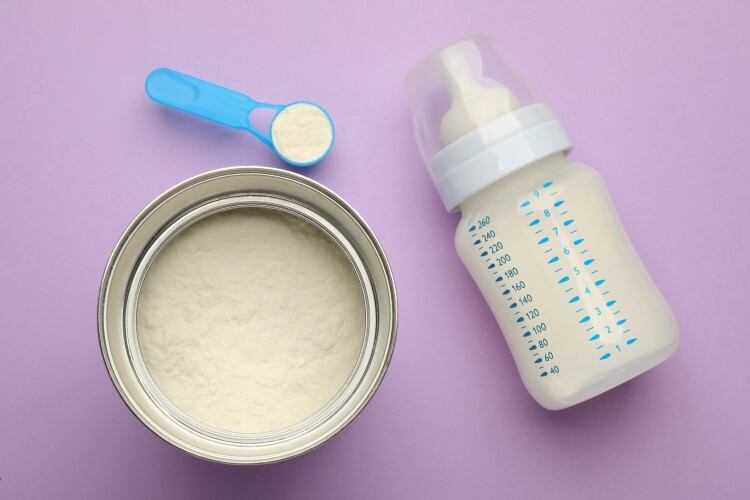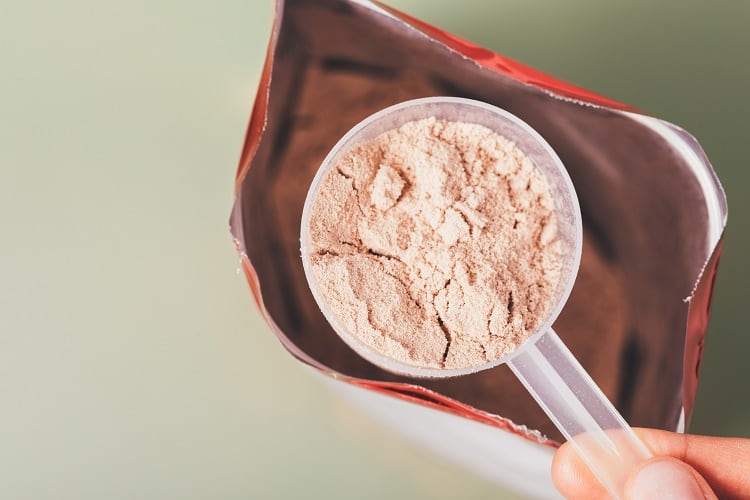Arla Foods Ingredients has entered a partnership with Belgium dairy co-op Milcobel over the supply of whey protein retentate.
The raw material will be refined by Arla and used in the production of speciality ingredients such as milk fat globule membrane for infant formulas or whey protein hydrolysates for medical nutrition. This is hoped to strengthen Arla’s position on the specialized ingredients market and ensure supply stability.
Henrik Andersen, CEO of Arla Foods Ingredients, told DairyReporter: “Mainstream consumers are increasingly looking for high-protein versions of their favourite food and beverage products, but in sectors like medical and early-life nutrition, it’s even more important to meet the need for sophisticated protein ingredients. Whey proteins are well-known for their excellent nutritional quality, which makes them a go-to source for early life nutrition and medical nutrition.”
He added: “When it comes to formula, both parents and healthcare professionals – in China in particular – are increasingly savvy, and specifically seeking out products containing specific ingredients, one example of which is milk fat globule membranes (MFGMs).
“In medical nutrition, malnutrition is a growing problem, and nutritional compliance has become even more important as a result of reduced healthcare budgets and lower bed availability. So there’s increasing demand for protein products that overcome taste challenges in products for patients with maldigestion or malabsorption.”
Milcobel Premium Ingredients produces ingredient cheese (mainly mozzarella and cheddar), cream, butter, milk powder and whey for the B2B market. The company has clients in food service and manufacturing, including restaurants, bakeries, pizza and chocolate makers, and others.
The whey retentate that will be supplied to Arla will be sourced from Milcobel’s mozzarella production facility in Langemark, Belgium. “This partnership is about a lot more than just a supplier-buyer relationship,” explained Kathleen De Smedt, corporate affairs and communication manager at Milcobel. “The full partnership consists of a multi-year cooperation to bring the quality of whey retentate to the highest level, as per the specifications required for the protein applications Arla Foods Ingredients will be using it for. The added value created through this partnership signifies a sizeable step up in the valorization of our whey stream, which in turn will benefit our member-farmers.”
Milcobel will also invest in upgrading whey retentate processes and upstream mozzarella production at its Langemark plant, we were told. “This has a double benefit,” De Smedtt added. “Not only will our whey retentate live up to the highest bacteriological standards, but the already high quality of our mozzarella will be further enhanced, meaning we can tap into even more markets with our premium mozzarella.”
Arla’s increased focus on speciality ingredients
In just two months, Arla Foods Ingredients has inked two strategically important partnerships that will secure the co-op’s position on the specialized ingredients market, ensure supply stability and uniform quality of the end-products.
In November 2022, Arla announced a partnership with UK-based First Milk, the dairy co-op behind The Lake District Dairy Co. cheddars, over the manufacture of whey protein concentrate. According to the agreement, the ingredient – Nutrilac FO-7875 - will be made at First Milk’s Lake District Creamery using Arla’s proprietary method. Nutrilac FO-7875 enables high-protein, low-fat formulations, such as drinking yogurts that contain 11% protein and 0.8% fat.
Meanwhile, the relationship with Milcobel has formally commenced, though supply will begin ‘gradually’ in Q4 2023.
The state of whey
According to Grand View Research, the protein ingredients market is set to expand at 10.5% CAGR from 2021 to 2028, with animal-based proteins accounting for 70% of the global revenue share in 2020. Advancements in manufacturing have improved the quality of refined whey products such as demineralized whey, WPIs and WPCs. These ingredients are increasingly used in the functional food and beverage market, itself a buoyant segment with a projected 9.5% CAGR by 2028 according to Fortune Business Insights.
Meanwhile, the whey protein market is also on a growth trajectory, with Statista expecting it to reach a valuation of US$18.12bn by 2029, from US$10.3bn in 2021.
While it is difficult to predict what the future holds for whey producers, a report by the European Whey Producers Association discusses several scenarios for the market to 2030.
In a scenario that could push demand for some whey proteins to 6%, geopolitical tensions continue to put limitations on trade, with food security becoming of higher priority. At the same time, the trend for plant-based protein alternatives is slowing while consumers continue to use whey proteins in their diets; demand for infant formula applications also increases.
In another favorable scenario, environmental restrictions are rolled out quicker, but the importance of whey proteins remains crucial for some health and nutrition applications where alternatives cannot be easily sourced. And while availability slows down, demand increases, pushing demand for WPI to 6%; WPC-80 to 4.5% and WPC-35 to 1.5%.
The outlook is less favorable however if food supply is prioritized at policy level but demand for plant- and fermentation-based protein alternatives among consumers also grows. This would effectively lead to oversupply, with the association estimating that demand for WPC-80 and WPI will be 1.5% and 3% respectively, but WPC-35 and whey powder will be hit, at -1.5% each.
In the least favorable scenario, called New Horizons, policymakers prioritize environmental restrictions which, compounded by shifting consumer preferences towards alternative proteins, slows down demand for animal-based proteins and paves the way for whey to be used as a specialty ingredient. Here, EWPA predicts that WPC-35 and whey powder demand will be hit, while WPC-80 and WPI will record growth of 1.5% and 3% respectively.
The full report is available via the European Whey Processors Association website.



